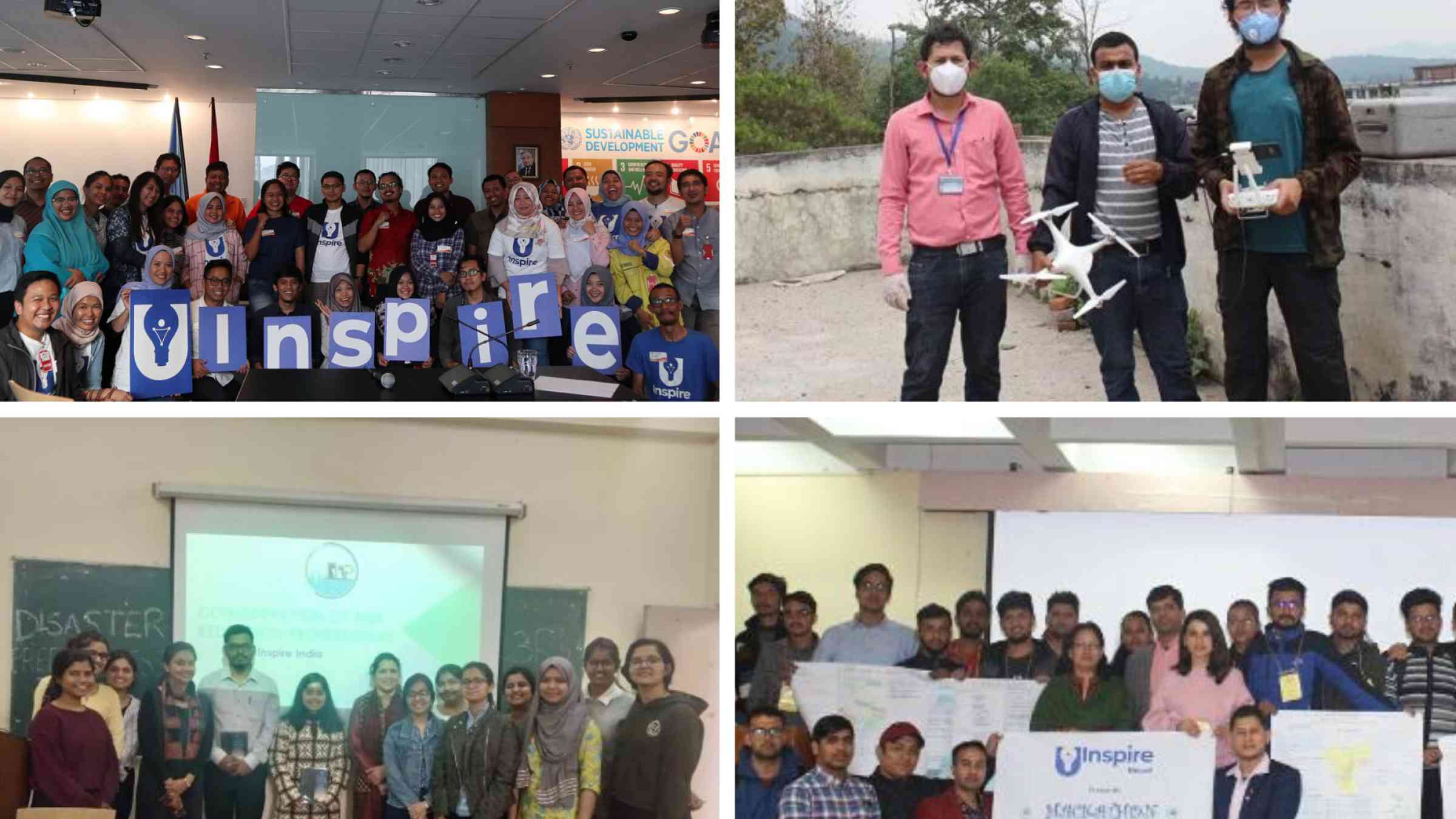National chapters from the U-INSPIRE Alliance start to log their voluntary commitments

KOBE – The Sendai Framework for Disaster Risk Reduction 2015-2030, the global roadmap to reduce disaster losses and strengthening the processes for doing so by 2030, highlights the pivotal role of stakeholders working in science, engineering, technology, and innovation (SETI). In particular, it states that science and traditional knowledge are needed to enhance the development of methods and tools for better data collection, risk modeling, assessment, mapping, monitoring, and the development of multi-hazard early warning systems.
U-INSPIRE is an alliance of youth and young professionals (YYP) working in SETI to support disaster risk reduction and resilience building. This alliance has been facilitated and nurtured by the United Nations Educational, Scientific, and Cultural Organization (UNESCO) together with the United Nations Office for Disaster Risk Reduction (UNDRR). Its origins can be traced back to 2018 in Indonesia, and it has been growing ever since. Today, there are twelve national chapters throughout Asia. This alliance is positioning itself as an active network for collaboration, where mutual learning is encouraged to address transboundary issues.
U-INSPIRE India, Nepal, and Indonesia have become the first national chapters to register their work in the Sendai Framework Voluntary Commitments online platform, which is administered by UNDRR. By publishing their activities in the platform, partners and stakeholders across the world can gain from their insights and work. For example, the Confederation of Risk Reduction Professionals (U-INSPIRE India) is committed to shaping disaster resilience by building the capacities of YYP in Disaster Risk Management (DRM) and Climate Change Adaptation (CCA) through university networks. U-INSPIRE Nepal has two voluntary commitments that showcase the dynamism of their young scientists. One is led by the Himalayan Risk Research Institute (HRRI), which is working to enhance the capabilities of YYPs to improve the development and promotion of scientific applications into DRR activities in Nepal. The Institute for Himalayan Risk Reduction (IHRR) has also committed to building resilience through the use of drones and geospatial technologies for disaster risk assessments and development planning. This first round of commitments also includes the work of U-INSPIRE Indonesia which aims to foster contributions by YPP in SETI at national, regional, and global levels to accelerate the implementation of the Sendai Framework.
Young scientists, who are active in DRR and are interested in creating a U-INSPIRE national chapter in their own countries, can find guidelines on how to do so in a recently published toolkit by UNESCO. Subsequently, national chapters can showcase their work on UNDRR’s Voluntary Commitments’ platform, which also serves as a task management tool through its automatic system of reminders to monitor outputs and report on progress, among other benefits.
Cooperation through the Voluntary Commitments’ platform can increase the effectiveness of everyone’s efforts. Young professionals and scientists want to expand their horizons as well as engage with policymakers, while international organizations, such as UNESCO and UNDRR, seek to empower partners and strength then role of science in informing disaster risk management. By joining efforts, synergies can be created along the path of the Science & Technology Roadmap towards the implementation of the Sendai Framework and the realization of a disaster-resilient world.